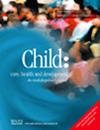Clustering of 24-H Movement Behaviours and Its Associations With Eating Behaviours and Adiposity Among Mongolian Preschool Children: A Cross-Sectional Study
Abstract
Background
Obesity-related behaviours such as physical activity, sedentary behaviour, sleep, screen time and diet often cluster in children. There is limited evidence on the clustering of movement behaviours among young children from low- and middle-income countries. This paper reports how 24-h movement behaviours cluster in Mongolian preschool children and their associations with eating behaviours and adiposity.
Methods
Cross-sectional study involved 201 children aged 3–4 years attending kindergartens in urban and rural areas of Ulaanbaatar city, Tuv and Uvurkhangai provinces, Mongolia. Children wore accelerometers to measure physical activity, sedentary behaviour and sleep. Parents completed a questionnaire to report screen time and eating behaviours. To derive clusters, hierarchical and k-means cluster analyses were performed sequentially. Associations between clusters, eating behaviours and BMI z-score were analysed using ANOVA. Logistic regression was applied to estimate the odds of being overweight depending on cluster membership.
Results
Three clusters were identified: All-rounders, Non-active Sleepers and Screeners. We found that around half the children exhibited at least one unhealthy behaviour and were classified into clusters with a mix of healthy and unhealthy behaviours. The clusters did not differ by sociodemographic characteristics. No significant association was found between cluster membership and BMI z-score of children. The cluster at highest risk for being overweight was Screeners (odds ratio = 1.7, 95% CI: 0.67–4.33), who exhibited two obesogenic behaviours simultaneously, screen time for > 4 h per day and regular consumption of unhealthy snacks (53%, p = 0.033) and sugary drinks (53%, p = 0.014).
Conclusion
Obesity prevention measures should begin in early childhood and target high-risk clusters, considering the co-occurrence of healthy and unhealthy behaviours. More research is needed in Mongolia to provide evidence for obesity prevention policies and inform targeted interventions to promote healthy behaviours from a young age.

 求助内容:
求助内容: 应助结果提醒方式:
应助结果提醒方式:


